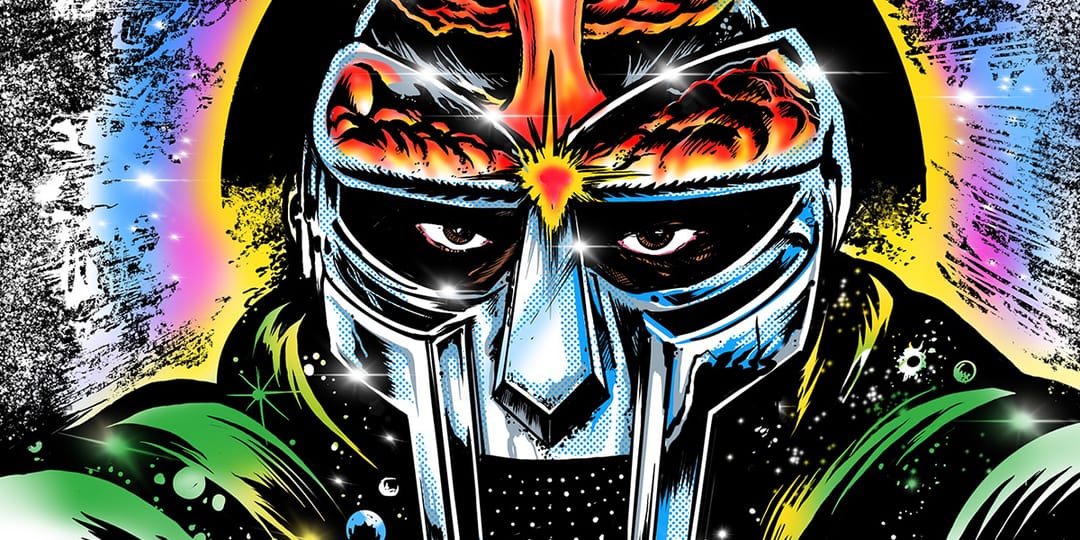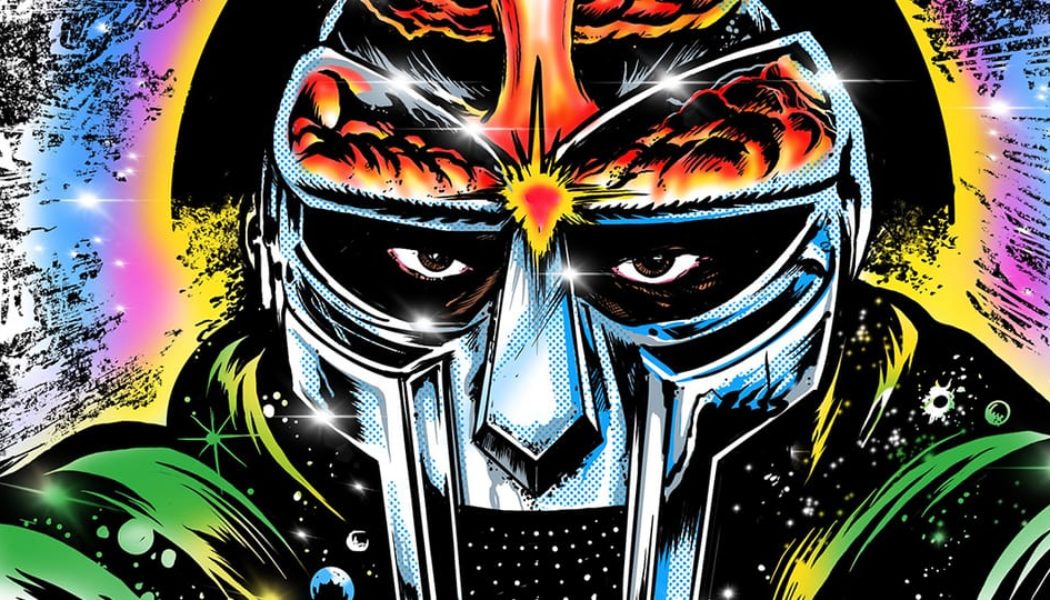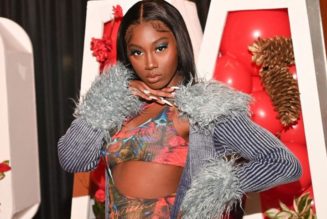
When the video call connects, S.H. “SKIZ” Fernando Jr. is instantly in awe of the 12-hour difference between us. The author, journalist and music critic’s backdrop teases the beautiful, sunny weather of Baltimore, Maryland, while the windows behind me show the electrifying evening skyline of Hong Kong. In just under two weeks, The Chronicles of DOOM: Unraveling Rap’s Masked Iconoclast, his biography about the late and great Daniel Dumile a.k.a. MF DOOM, will be hitting the shelves via Astra Publishing House.
It took him a total of three years to put it all together, and the idea of penning the book arose almost immediately after the announcement of the artist’s death. SKIZ had just handed in his Wu-Tang Clan biography, From The Streets of Shaolin, on January 1, 2021 — the day after DOOM’s wife Jasmine Dumile confirmed the sad news to the world. Instead of looking forward to getting some well-deserved rest, his fixation on all the podcasts surrounding the artist’s life shifted his focus to the thought of writing a biography about the enigmatic rapper. Many were shocked to find out that 49-year-old DOOM had actually passed three months prior to the announcement on October 31, 2020 in the United Kingdom, “You never think that a guy is going to pass, especially a guy that’s, to me, young.”
How could one even fathom MF DOOM’s death? He was, to many, invincible. He’s the Supervillain who sent out DOOMbots to perform as him at live shows. He’s King Geedorah, a golden, 300-foot, three-headed space dragon. He’s Viktor Vaughn, a mischievous yet brilliant young man who looks up to DOOM. Yet to SKIZ, Daniel Dumile was first Zev Love X: one third of the rap group KMD alongside his brother, Subroc. “They were one of the groups to watch back in the day, and then they just kind of dissolved and disappeared,” he recalls, referring to the tragic period of Subroc’s sudden death in 1993 that ended KMD. The period between this life-shattering event and Dumile’s reemergence as MF DOOM in the late ‘90s is described by the author as the “missing years,” and the lack of accounts of his metamorphosis during this time easily piqued SKIZ’s interest.
“DOOM was one of the people who brought hip-hop back to its essence. In the golden age of hip-hop, it was about creativity, originality and innovation. DOOM hit all three of those things in spades and in all of his work.”
It took SKIZ almost a year just to conduct interviews, and he was able to speak to about 50 of DOOM’s friends, family and collaborators. While he managed to communicate with the likes of Dimbaza Dumile, DOOM’s younger brother, the folks in his inner circle such as Jasmine (who he wrote a letter to), his manager Sadiq, his “fightman” and former manager Big Benn Klingon and KEO (Blake Lethem), the artist who created the famed mask, didn’t want to talk out of respect for the rapper. In the book, an interviewee even claimed that DOOM was doing “famous people things” when he started to earn substantial amounts of money but refused to divulge any specific details. This proved to be a challenge for someone writing a book on someone else’s life, but it was a decision SKIZ couldn’t help but honor. “That just shows the loyalty that DOOM engendered in people. They were really loyal to him,” he says, continuing, “and that’s a special thing too, because when you look at other artists in the industry — I mean, you could just think about P. Diddy right now, everyone’s turning on him — DOOM was a whole different type of artist. I respect that about him. He wasn’t trying to be out there in the limelight and that was what attracted people to him.” The author was able to pull from interviews that DOOM and his circle had done in the past, and his connections in the music industry as a journalist and independent record label founder gave both him a bigger perspective and the space for the interviewees to be forthcoming in speaking about DOOM.
DOOM’s story can be described as the revenge of the underdog: he experienced some fame, suffered from the sudden death of his brother and then lost his record deal, but went on to reinvent himself as the man we now know as “your favorite rapper’s favorite rapper.” Unlike most of the artists who try to claim that label for themselves, DOOM was almost allergic to the spotlight. There are barely any photos of him post-KMD, let alone photos without the mask. He deemed his anonymity as truly sacred and it was the cornerstone of his persona’s obscurity, telling listeners at his Red Bull Music Academy lecture that “anyone here can wear the mask and be a villain.” SKIZ tactfully handles the creation of this biography with care and grace, still respecting DOOM and his inner circle’s wishes for privacy and away from the prying eyes of the public — even in death. He avoided talking about Dumile’s kids and family, and instead centered The Chronicles of DOOM on his music and redemption. “You rarely find people like that who have had a bout with fame and then kind of lost it all, but they’re able to build themselves back up and come back even bigger than before. To me, that’s the story.” Although he’s never met nor spoken to his subject matter personally, studying the rapper’s life for three straight years had an impact on the author, who also happens to make music under the stage name Spectre the Ill Saint. Just like DOOM, he makes and enjoys music for music’s sake, not for what the crowd is chasing. He’s also not an avid fan of the limelight, which is why it came as a surprise to him when he realized that DOOM had transcended the field of underground rap and hip-hop as a whole.
“DOOM expanded the audience for hip-hop. He’s made the tent a little bigger. And that’s a good thing because I’ve always seen hip-hop as art and as a culture. It’s now pop culture, but that doesn’t deny the fact that it’s still artistic. DOOM was one of the people who brought hip-hop back to its essence. In the golden age of hip-hop, it was about creativity, originality and innovation. DOOM hit all three of those things in spades and in all of his work.”
While The Chronicles of DOOM maintains much of the artist’s mystique, it also makes it a point to humanize the enigmatic Supervillain. SKIZ was in the midst of writing the section of the book that deals with DOOM’s passing when his cause of death (which was confirmed by Jasmine) was revealed in July 2023. The rapper who we thought was indomitable was, in fact, human. According to the author, this makes it easier for us to identify with the man and the mask. “He wasn’t a perfect guy, and he didn’t represent himself like that. He represented himself as the Supervillain — a flawed anti-hero,” he shares. “That’s a great thing, because a lot of rappers are trying to represent themselves as the greatest of all time and all of this BS. But DOOM? He was a man of the people.”
“You rarely find people like that who have had a bout with fame and then kind of lost it all, but they’re able to build themselves back up and come back even bigger than before. To me, that’s the story.”
Why did you decide to divide the book into sections?
The way the book is organized was just originally to help me, because he’s got such a complex story. Obviously, it’s got to be somewhat linear, and in a way, somewhat historical, but the way that DOOM operated was not linear in any way. He was working on five albums simultaneously in the early 2000s. How do you tell that story?
So as you see in the book, I do jump around in time. When I was doing the book, I actually created a timeline for myself so I could see everything as it progressed. The sections — The Man, The Myth, The Mask, The Music, The Legend — I kind of played with the saying “The Man, the Myth, the Music.” I also used song titles for chapters to help fans structure his life. To me, this was a combination of linearity and also jumping through time. It’s up to the reader to see if I accomplish that well.
It also gives me the ability to add context when necessary. I started off with The Man, which is really about his early life. It’s about Daniel Dumile, the person before he became DOOM and all these things. Then we go to The Myth — his mythology was very important to DOOM. I go into his influences like Godzilla movies or talk about [Nuwaubian Nation founder] Dr. York, who is obviously a big influential figure for DOOM because he introduced him to all these esoteric subjects that he basically studied the rest of his life.
“I think we’re really never gonna get to the bottom of DOOM, and that’s just fine. Some things should be left unsaid.”
In the first few chapters, you focus quite heavily on DOOM’s community and his earlier relationships. Why was it important for you to establish those connections for your readers?
No person grows up in a vacuum. Everyone, especially as a kid, is influenced by what’s happening around them, and that’s why context is so important. That’s why it’s so important to rehash some of this early hip-hop history because it helps you understand the influences that DOOM drew from and the people that he was looking at. Imagine a guy who’s just in high school who becomes friends with this group that gets signed, they put you on to do an appearance on the album and then that song goes gold. You go from zero to 100 in two seconds and just like that, you’re in the industry.
All of that background is important, you know? And I just go deep in whatever I do. In the Wu-Tang book, I had a whole chapter about the crack trade and how crack got into New York because they grew up in the crack era and they were former drug dealers. It’s a similar thing with DOOM, you talk about his affiliation with the Ansar Allah community because that was important to him as a teenager growing up. On the back of the Operation: Doomsday album, you even see him and his brother dressed in white robes. All of this background and context is vital in understanding the main story.
From all that research, was there a fact or a specific interview you did that stayed with you?
The one thing that was hard to do was about Dr. York. That was a difficult chapter because I knew the influence he had on DOOM, but you find out that this guy was kind of an unsavory character. You might be a fan of Kanye West’s music, but for Kanye West the human being, you might be scratching your head. I was thinking about how DOOM processed that, because here was this guy who was a huge influence on him and introduced him to all of this esoteric knowledge. I was wondering how he must have felt when he heard that this guy was not a nice human being.
Other than that, I enjoyed accessing all of DOOM’s interviews, and I’ve probably accessed every interview that he’s ever done, whether on YouTube or print because he’s so different from every other rapper that I’ve interviewed in my career. I’ve interviewed probably over 100 rappers in my career and there’s always something that people have in common — one of them is thinking that they are it. But to me, even though DOOM kind of represented himself like that, he was kind of also making fun of himself. And I think that self-deprecating humor is refreshing in the rap game because everyone’s so serious. Everyone’s like, “I’m the best. I’m better than this guy.” It’s all about competition. DOOM didn’t play any of that stuff, and that’s why he’s also an artist.
We have to remember that rap today is entertainment. It’s pop culture. But that doesn’t mean that it’s not art too. This is poetry. This is lyrical poetry, and DOOM reminds us of this fact. His references, his style, his technique — he was very focused on the art of rhyming, the art of putting beats together, and it wasn’t just a formulaic process to him. It was a real thing to him and he put a lot of himself into that. You have to respect that because this is an art form where people are just doing it for the money or just to get out there.
Another artist like that, who I would recommend and salute, is Ka.
I read the news.
He just passed away like two days ago. I put him in the same category as DOOM. He’s an artist, not just an entertainer. He’s someone who a lot of people should know a lot more about. It’s always sad when people die and only then do people go back to their catalog. Luckily, DOOM left us a huge catalog to go back to, so we’ll always be digging into that.
“There’s no expiration date to good music…It makes my heart feel good that people are actually finding their way to [DOOM], because that just tells me that quality never goes out of style.”
Do you believe that the general public is ever going to be able to truly unmask MF DOOM, or is he always just going to remain as something of an enigma?
I think he’ll always be an enigma, because no one’s gonna get inside his head, you know? I didn’t even attempt to. I stated that early on — I’m not trying to go behind the mask. I’m not trying to get into his head. My book is more about reportage. It’s straight journalism. It’s reporting. The only people who were able to get inside DOOM’s head were his inner circle. People like Kuruious, Big Benn Klingon, obviously his wife, KEO — these are people who really knew doom intimately, and they probably had like, really cool discussions with DOOM.
I remember interviewing Dimbaza a couple of times for hours. One day, after we finished, he called me back and was like, “You really got to put it in the book that DOOM was into all of this esoteric knowledge.” And I was like, “I’d like to do that.” I’d like to put more of that, but I myself didn’t even know that. That’s something I would have had to talk to DOOM about directly, and it’s kind of sad because I’m into all that stuff too.
I think we’re really never gonna get to the bottom of DOOM, and that’s just fine. Some things should be left unsaid. I think I’ve revealed enough in this book to make you kind of dig into DOOM for yourself and dig into his music more if you want to find out more about the man behind the mask.
This book is already being called essential reading for hip-hop heads, but what do you hope newer fans, or even those unfamiliar with MF DOOM, will take away from it?
I hope the book gives everyone a greater appreciation of DOOM. I was initially surprised to even get a book deal about this obscure character, but the fact that Dan Charnas’ Dilla Time came out showed that there’s a market for people who want to find out about these characters. He’s not a 50 Cent, he’s not a JAY-Z, he’s not a Rick Ross or a Drake, but there’s still a hunger to find out about these figures who aren’t necessarily selling millions of records but still got a lot to say.
You mentioned that you were in shock to find out that DOOM is no longer considered an underground rapper. Why do you think his popularity has changed?
There’s no expiration date to good music. I think that the youth will always gravitate towards good music, regardless of the hype. I think the youth are in it for the right reasons. They will always gravitate towards what’s good. With DOOM, there’s a lot of ways in. He had the whole cartoon thing going on with Adult Swim, all that. It makes my heart feel good that people are actually finding their way to him, because that just tells me that quality never goes out of style.








